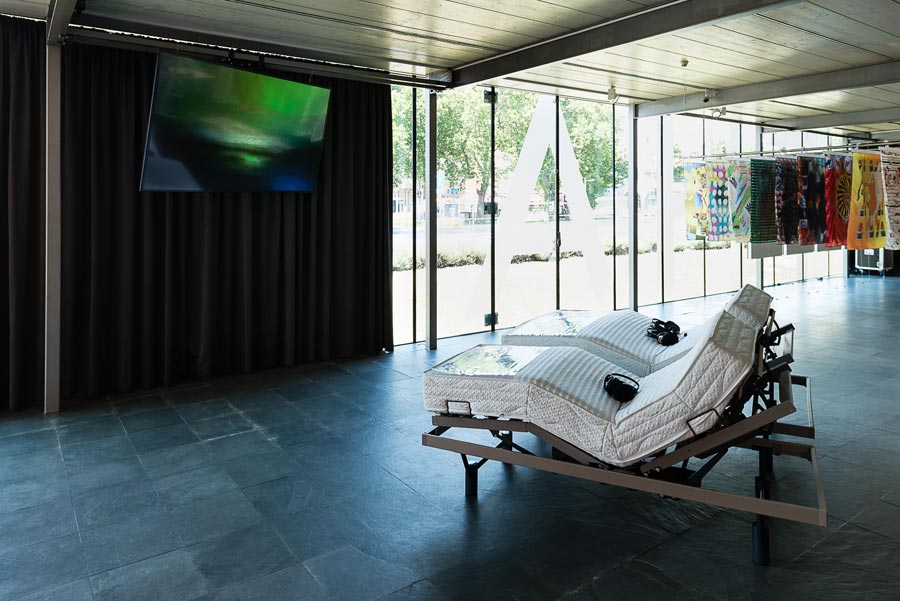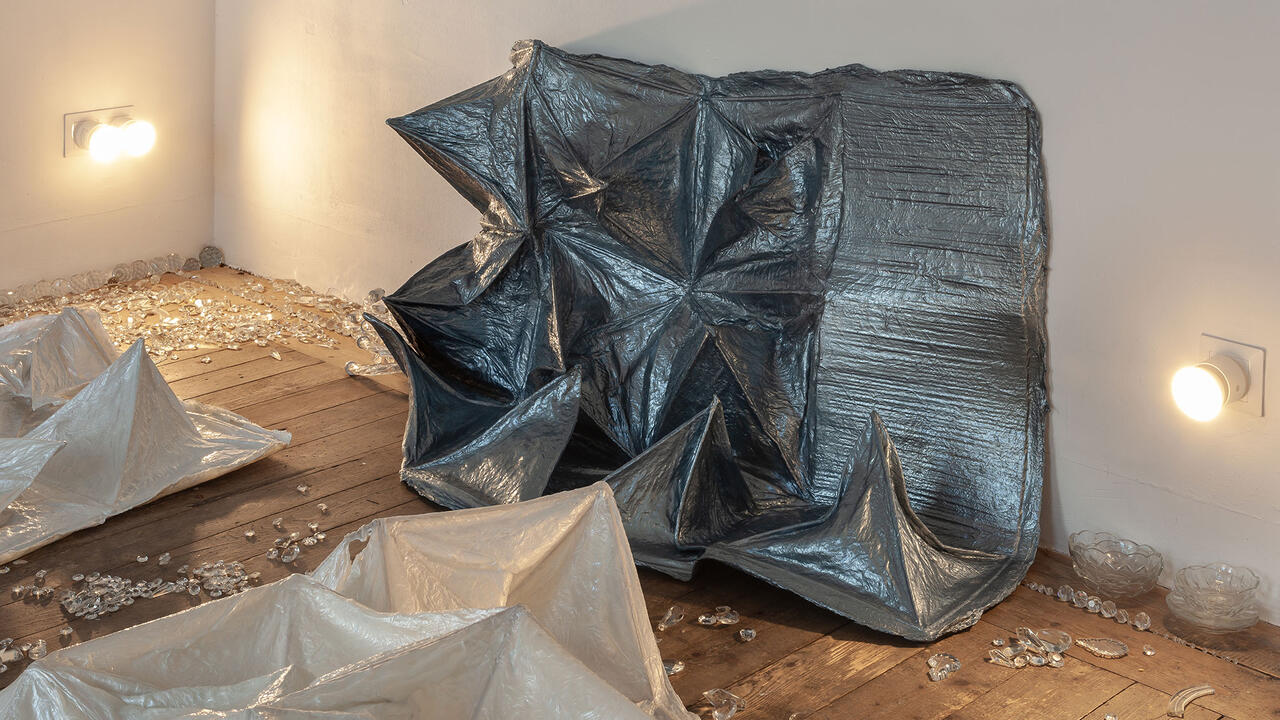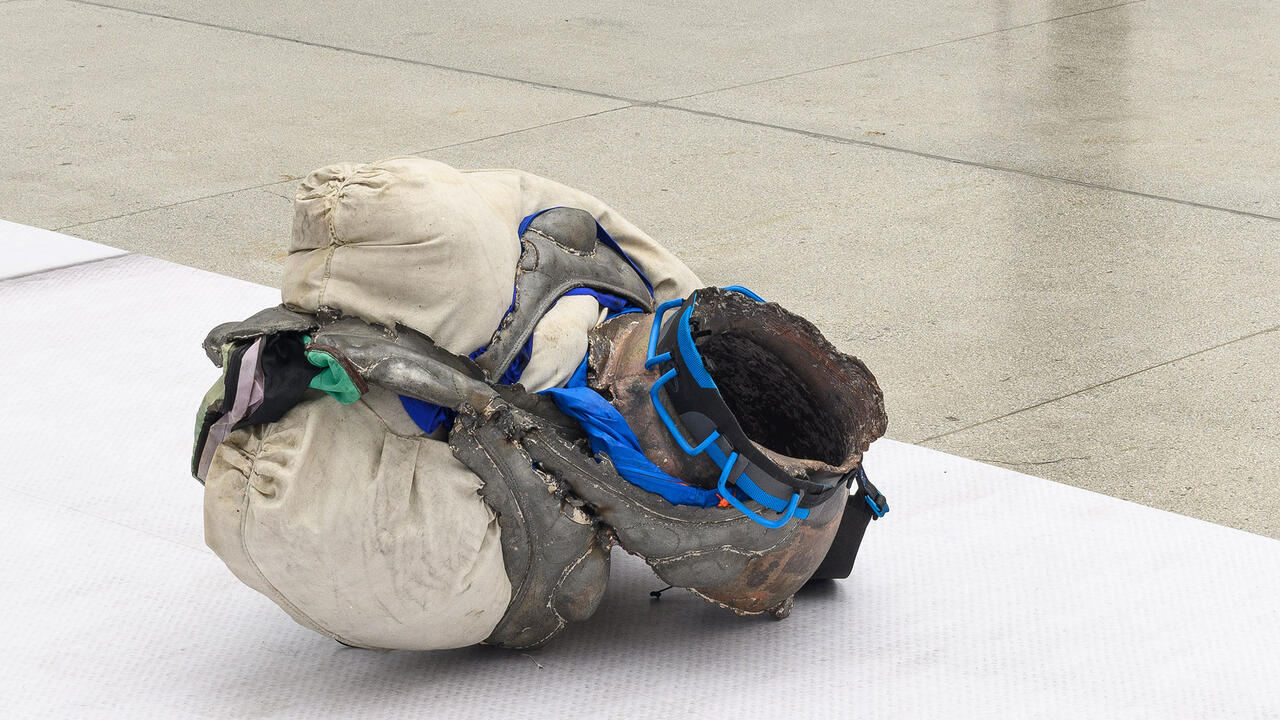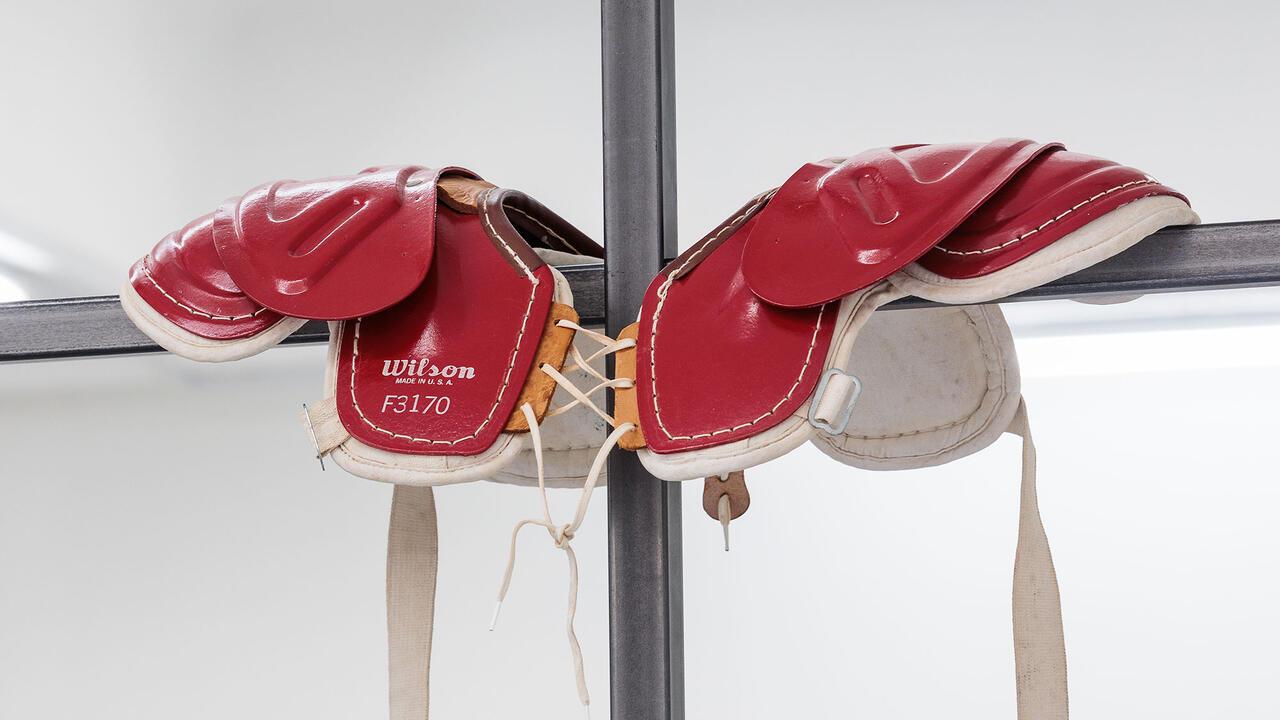Hi, Robot
Does an automaton-filled future spell the end of work, of life? A report from the future-focused Vienna Biennale 2017
Does an automaton-filled future spell the end of work, of life? A report from the future-focused Vienna Biennale 2017

William Gibson is reported to have said that the future is already here, but unevenly distributed. I doubt he had decentralized prediction markets in mind: those marketplaces trading in what we know of the future. I recently met the founder of a company specializing in decentralized markets that trade on the outcome of events: not just ‘futures’ – as in futures contracts – but that sibylline monad, the Future, the plane of events that are to occur. The founder of this company, which runs on the cryptocurrency Ether, began speaking to me about ‘assassination markets’. Assassination markets – mentioned in a 2006 George Pendle column in frieze – are prediction-based forums (founded in part by cypherpunk activist and tech writer Timothy C. May) in which a person can place a bet on the date an individual will die. The person with the largest crypto bounty is Ben Bernanke, former chairman of the US Federal Reserve, who has been vocally opposed to cryptocurrency. These markets form the basis of the thinking behind the global, internet-based decentralized prediction markets whose goal is to eventually create an oracle-like database of knowledge in which all of tomorrow’s outcomes are predicted and bet upon. When I asked this man if his life resembled an episode of TV show Black Mirror he said so much so that he had to stop watching.

So will the robots kill us all or will we do it ourselves? In the space of a few years, what we laypeople know as the ‘blockchain’ – an open-source technology highly secure, decentralized and on a publically accessible ledger – has sprouted into a number of lucrative ventures with the potential to change not just finance but healthcare, education, criminal justice and perhaps art too. Just last week, a number of banks (including Deutsche Bank, HSBC and Société Générale) selected IBM to create and host a new blockchain system. I can read on Reddit about ‘decentralized courts’, a speculative crypto-institution for dispute resolution that would provide ‘arbitration in decentralized crowdsourcing’ and the use of ‘smart contracts for events that are potentially highly subjective’. Last month, I overheard an art professional proselytizing about the cryptocurrency Ethereum, which has enjoyed a recent surge in value, and proclaiming that we need a decentralized platform of virtual currency for assessing art’s symbolic value. I countered that this was one job of good old art criticism, assessing value, outing myself as behind the times in many senses.
The future of work is on everyone’s mind, it seems, so the theme of this year’s cross-discipline Vienna Biennale ‘Robots. Work. Our Future’, including art, architecture and design, was prescient. Organized by Vienna’s Museum of Applied Art (MAK) – in cooperation with the University of Applied Arts Vienna, Kunsthalle Wien and Architekturzentrum Wien – the biennial, which runs from 21 June to 1 October, comprises 10 exhibitions focusing on the second-wave effects of the ‘digital revolution’, or the capacities for automation, AI, and robotics to fundamentally shift the ways we work, speak, relate, love, criminalize and, yes, perhaps obliterate one another.

At Kunsthalle Wien, the exhibition ‘Work it, Feel it!’ focused on work as an all-encompassing sphere of biopolitics, marked by surveillance networks of control. It presented the worker as a laptop-strapped cognitive labourer cramped by affective and physical states of self-harm (Tendinitis Freelance, 2013, by Sidsel Meinche-Hansen), or imperatives to self-optimize (Hannah Black’s Bodybuilding, 2015). At MAK, the exhibition ‘Hello, Robot’ focused on ‘design’ as an interface between human and the machine; others on practical solutions for life in cities (‘StadtFabrik’), or on the relations ‘between things’ (MAK Design Lab). Art made an appearance, too: the show ‘Artificial Tears – Singularity & Humans – a speculation’ filled a hall with dystopian surfaces, steaming objects of tech noir, and ghostly avatars, with works by Cecile B. Evans, Dora Budor, Aleksandra Domanović and Jean-Marie Appriou.
A collaborative exhibition organized by MAK, the Vitra Design Museum and Design Museum in Ghent, ‘Hello Robot’ felt like the least far-fetched of the venues, reasonably framing ‘design’ as a notion intertwined with technology, as an accessory to both art, the machine, and the human body. The show began with extensive, if somewhat obvious, inventory of representations of robots within culture, from the invention of the word ‘robot’ – coined within R.U.R. – Rossum’s Universal Robots, a 1920 play about automata by Czech writer Karel Čapek. I was curious to learn that in 1937, the Depression-era Works Progress Administration in the US made a cautionary play ‘The Romance of the Robot’, a satirical romance against artistic modernism. This is followed by clips and posters from Jacques Tati’s Mon Oncle (1958), the film Wall-E (2008), the music video for Björk’s All is Full of Love (1999) – with its scene of robot love – and Spike Jonze’s Her (2013) and onward. If our robots have developed, then our feelings for and against them largely haven’t: they still serve as playthings for us humans to live out our dreams, hatred and perhaps love.

Recently, the reality of automation has rekindled fears of mass joblessness, of a rich minority living a life of eternal leisure while everyone else struggles to find work, and of the human species turned into serfs in a new robotic feudalism. The Last Job on Earth: Imagining a Fully Automated World (2016) is an animation made by Moth Collective for the Guardian website which shows a lone human character, getting automatic medical check-ups and sitting in a self-driving car, going to a company called ‘Corp Tech’. Later I logged on to the BBC’s 2015 microsite, Will a Robot Take Your Job (now defunct but accessible here), which allowed visitors to look up their so-called ‘redundancy risk’, or the probability that their job will be taken by a robot, based on workplace automation. My score was 8% based on the category ‘Journalists, Newspaper and Periodical Editors’ (though according to other metrics, report writers are near the top of the list for occupations that will be snuffed out); the probability that the job of the computer programmer who made the website was a tense 48%.
Robots have a sense of humour too and can be just as useless as humans. A robot named Manifest at MAK is a scribe that continuously, algorithmically pens manifestos based on a databank it has stored on art, philosophy and technology. The resulting manifestos come as fractals of gnomic wisdom: ‘idioms are technologies’; ‘formulating takes may forms, but considering has only one’. Gerard Ralló’s Advisor for Reintegration (2010) is a gadget intended to be worn around the neck which helps you talk to others: I read, ‘a gadget that helps young generations who have lost the ability to participate in small talk’. The equally chilling Reiterative Communication Aid is a device that lets you automate your expressions to other people in real time so you can focus on other things, because ‘most of the conversations we have through life are redundant). What other things? Perhaps talking to gadgets like Amazon’s Echo (launched in 2015), or pleasuring yourself with intimacy machines, such as the ‘teledildonic products’ Onyx and Pearl created by the manufacturer Kiiroo, which are presented in ‘Hello, Robot’ too.

In an age of automation and robotics, how will we relate to one another? Do we need a new code of ethics? Ethical Things (2015), by the group automato.farm (Matthieu Cherubini, Saurabh Datta and Simone Rebadudengo) points to the lapses in ethics within AI, the notion that discrimination is endemic, and a proposed remedial crowdsourcing platform to reflect the will of the crowd determining outcomes of specific events. No matter that Microsoft’s ‘smart’ twitter bot, when launched in 2016, quickly turned racist before finally tweeting ‘make America great again!’
Other projects point more directly to human fallibility. Traffic Robot, the product of Congolese engineering association Women’s Tech, aims to improve the traffic system since human traffic police are known to take bribes, and standing in busy crossings is dangerous: the solar-powered traffic robots send real-time footage to a central office allowing them to be controlled remotely. Another project, knife.hand.chop.bot (2007) by 5Voltcore is a device that gauges our levels of trust in technology: users allow the space between their hands to be stabbed by a knife-wielding robot; I read, incredulously, that that if the user perspires, the user’s sweat will cause the machinery to lose its grip, and the robot will potentially stab its user. The interface of ‘trust’ between human and robot often looks more like enforcement and corporate risk-aversion.

How to explain the outbursts of human cruelty, vitriol, racism and discrimination that an automated world seems to create, a la HBO’s dystopic frontier show Westworld (2016–ongoing)? How do we account for the fact that we are turned to automata just as quickly as we ‘humanize’ the things around us? In the short story ‘My Elegant Robot Freedom’ by Bruce Sterling, specially commissioned for the Vienna Biennale, Sterling (who consulted on the show ‘Hello, Robot’) writes of a young German woman living in the Golden Age of the 2040s who gets fed up with the Internet of Things, joins self-organized group of tech enthusiasts (similar to the constructivists of the previous century in Munich), and eventually becomes a landlord. The annexation of ‘art’ here is telling. In such a vision of society, art becomes once again an annex to greater, more pressing-seeming concerns.
No matter. The future of work is a crucial subject, and models in which life melds with art is precisely what needs undoing. Workplaces have progressed since the clichés of cubicles and water coolers of decades past, but what they will look like in decades to come, nobody knows. Recently I noticed an iMessage I had sent had a curious line underneath it – the product mentioned in my ‘private’ message was ‘clickable’ and searchable. Who is profiting? In physical life, an insistence on ‘flexibility’, open-plan offices, a stress on ‘doing what you love’, and the architecture of borderlessness has obliterated for many what was once known as ‘work/life’ balance. The latter gets robotically subsumed into the former. And art especially is no exception – it was Joseph Beuys who famously claimed that he ‘knows no weekend’. Increasingly it seems that it us who are the robots, bugging out and glitching in manic bursts of outrage or vitriol. Whether machines can help us reset the equation is doubtful – but if we care to observe, they can still provide a mirror for our habits, desires and fears, and for the moment that seems worth something in itself. Even we robots have feelings too.
The 2017 Vienna Biennale ‘Robots. Work. Our Future’ runs from 21 June till 1 October.
Main image: AKA, Musio K, included in ‘Hello, Robot’, MAK, Vienna. Courtesy: 2017 Vienna Biennale © AKA, LLC





















